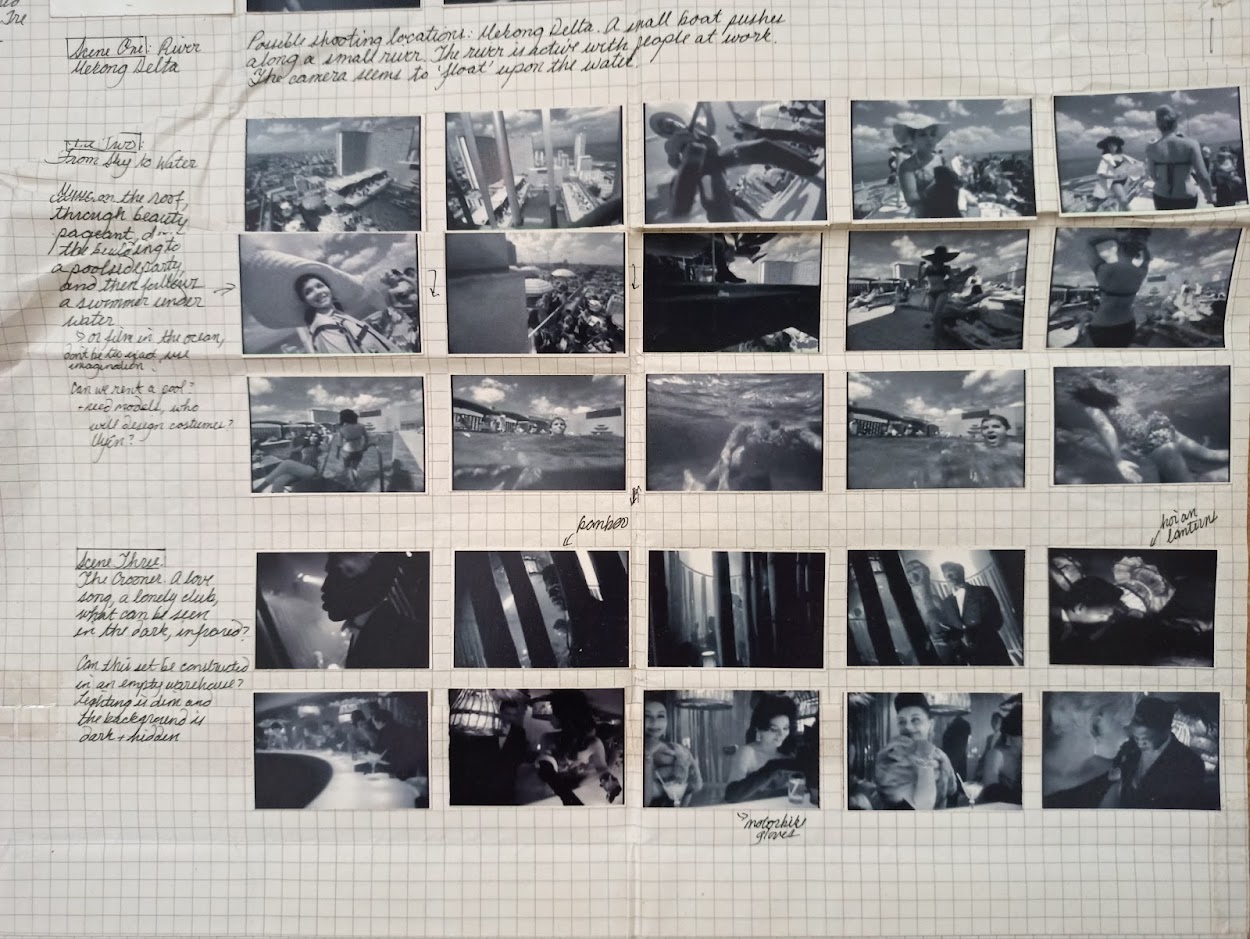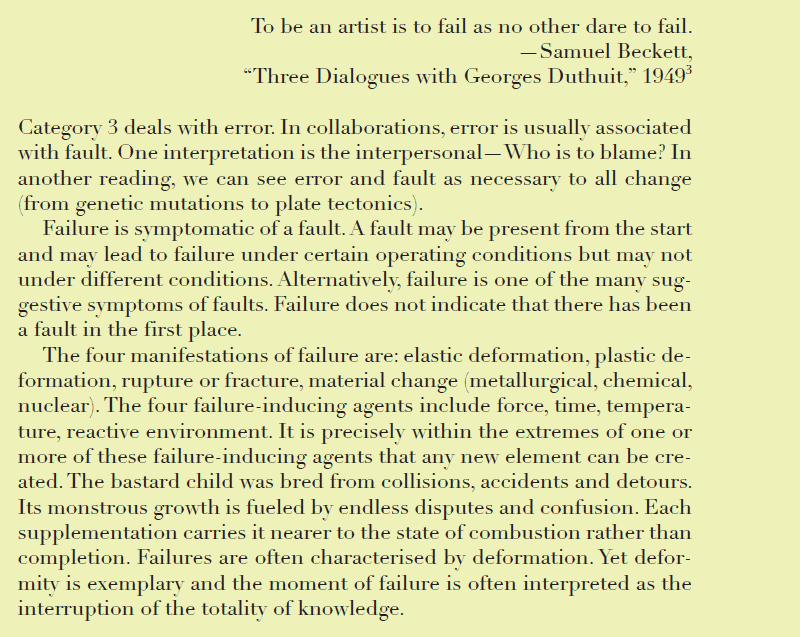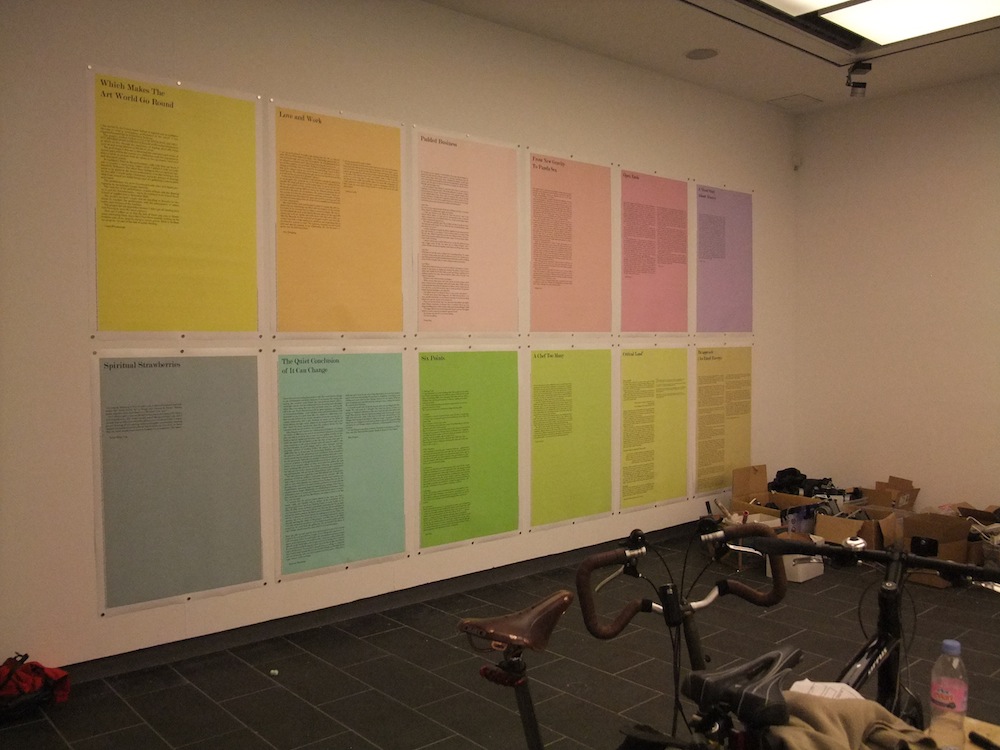This text was co-authored by Le Tuong Vi and R. Streitmatter-Tran and commissioned for Singapore-based artist, Michael Lee's project, The Ex-Files where artists were asked to contribute a text on failure in artist collaborations. It was exhibited in the show, Institution for the Future, curated by Biljana Ciric and Sally Lai at the Chinese Arts Centre in Manchester.
The text is below (and the full pdf can be downloaded on the side link).
WHAT IS IT TO FAIL?
We noticed that you felt the need to put failed in quotes regarding working relationships. Perhaps we should give the same broad readings to “collaboration”. In the development of our persona, VILE/RATS, the distinction between collaborator and assistant is as of yet resolved.
Failure has been sorted into four categories2: 1) Dissatisfaction and Rejection, 2) Idealism and Doubt 3) Error and Incompetence and 4) Experiment and Progress. Our collaboration to date has tasted each of the four categories. It is likely that if category 4 is intrinsic to failure, it is also intrinsic to the creative practice itself.
“To be an artist is to fail as not other dare to fail”
- Samuel Beckett, Three Dialogues with Georges Duthuit, 1949 3
Category 3 deals with error. In collaborations, error is usually associated with fault. One interpretation is the interpersonal - who is to blame. In another reading, we can see error and fault as necessary to all change (from genetic mutations to plate tectonics).
Failure is symptomatic of a fault. A fault may be present from the start and may lead to failure under certain operating conditions but may not under different conditions. Alternatively, failure is one of the many suggestive symptoms of faults. Failure does not indicate that there has been a fault in the first place.
The four manifestations of failure are: elastic deformation, plastic deformation, rupture or fracture, material change (metallurgical, chemical, nuclear). The four failure-inducing agents include force, time, temperature, reactive environment. It is precisely within the extremes of one or more of these failure-inducing agents that any new element can be created. The bastard child was bred from collisions, accidents and detours. Its monstrous growth is fueled by endless disputes and confusion. Each supplementation carries it nearer to the state of combustion rather than completion. Failures are often characterized by deformation. Yet deformity is exemplary and the moment of failure is often interpreted as the interruption of the totality of knowledge.
THE POINT OF FAILURE, TO WHAT EXTENT DOES ONE FAIL?
“To do justice to the figure of Kafka in its purity and its peculiar beauty one must never lose sight of one thing: it is the purity and beauty of a failure. The circumstances of this failure are manifold. One is tempted to say: once he was certain of eventual failure, everything worked out for him en route as in a dream.”
Walter Benjamin’s letter to Gerhard Scholem4
Brinelling is a failure mode that occurs when a permanent discontinuity occurs in one or both mating members as a result of static forces between two curved surfaces in contact. Not to be mistaken for false brinelling that occurs when vibrating contacting bodies in the presence of very small loads pushes the lubricant out of the surface area.
The Theory of Failure (aka, Failure Criteria or Mohr’s Law) basically asks at one point does one yield? Metallurgists have long known that if you hammer the shit out of certain metals the crystalline structures realign - this process is called work hardening. The metaphor works for us.
THE FAILURE
VILE/RATS arose through several conversations at dia/projects at the fault lines of science, art and philosophy. Over several months of investigation, banter, distraction, we’ve amassed a sizable collection of collaborative google documents ranging from lists, grievances, and amazon wish-lists. We dream of failure and we dream of Kafka.
----
1. Critical Load is defined as the maximum axial load that a column (mechanical, architectural, or possibly literary) can carry and still remain straight (without deformation).
2. Le Feuvre, Lisa. Failure (Documents of Contemporary Art). Cambridge: The MIT Press, 2010.
3 Astro, Alan. Understanding Samuel Beckett. Columbia: Univ. of South Carolina Press, 1990.
4 Benjamin, Walter and Adorno, Theodor. The correspondence of Walter Benjamin, 1910-1940. Chicago: University of Chicago Press, 1994.
Figure 6. The model of the scientist in ‘technical proficiency-enthusiasm-achievement’ space. From Catastrophe Theory, by Vladimir I. Arnold, Heidelberg: Springer-Verlag, 1992.
DETAILS
2011
R. Streitmatter-Tran and Le Tuong Vi
Chinese Arts Centre
Asia Triennial Manchester














